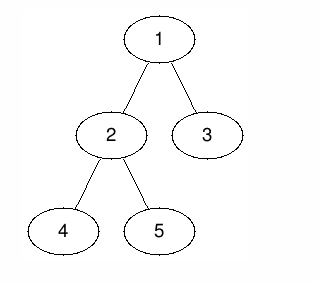Preparando MOJI
Hanh is a famous biologist. He loves growing trees and doing experiments on his own garden.
One day, he got a tree consisting of $$$n$$$ vertices. Vertices are numbered from $$$1$$$ to $$$n$$$. A tree with $$$n$$$ vertices is an undirected connected graph with $$$n-1$$$ edges. Initially, Hanh sets the value of every vertex to $$$0$$$.
Now, Hanh performs $$$q$$$ operations, each is either of the following types:
Since Hanh is good at biology but not math, he needs your help on these operations.
The first line contains two integers $$$n$$$ and $$$q$$$ ($$$1 \leq n, q \leq 150\,000$$$) — the number of vertices on Hanh's tree and the number of operations he performs.
Each of the next $$$n - 1$$$ lines contains two integers $$$u$$$ and $$$v$$$ ($$$1 \leq u, v \leq n$$$), denoting that there is an edge connecting two vertices $$$u$$$ and $$$v$$$. It is guaranteed that these $$$n - 1$$$ edges form a tree.
Each of the last $$$q$$$ lines describes an operation in either formats:
It is guaranteed that there is at least one query of the second type.
For each operation of the second type, write the expected value on a single line.
Let $$$M = 998244353$$$, it can be shown that the expected value can be expressed as an irreducible fraction $$$\frac{p}{q}$$$, where $$$p$$$ and $$$q$$$ are integers and $$$q \not \equiv 0 \pmod{M}$$$. Output the integer equal to $$$p \cdot q^{-1} \bmod M$$$. In other words, output such an integer $$$x$$$ that $$$0 \le x < M$$$ and $$$x \cdot q \equiv p \pmod{M}$$$.
5 12 1 2 1 3 2 4 2 5 1 1 1 2 1 2 2 2 3 2 4 2 5 1 2 2 2 1 2 2 2 3 2 4 2 5
1 199648871 399297742 199648871 199648871 598946614 199648873 2 2 2
The image below shows the tree in the example:

For the first query, where $$$v = 1$$$ and $$$d = 1$$$:
Hence, the expected values of all vertices after this query are ($$$1, 0.4, 0.8, 0.4, 0.4$$$).
For the second query, where $$$v = 2$$$ and $$$d = 2$$$:
Hence, the expected values of all vertices after this query are ($$$2.2, 2.4, 2, 2, 2$$$).